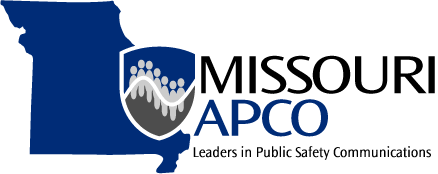This past Thursday, Missouri APCO submitted the following letter to all of Missouri’s Congressional delegates, urging for passage of an infrastructure package that includes $10 Billion in NG9-1-1 Funding. The letter was originally drafted by the Missouri 9-1-1 Service Board.
Dear _________________,
I am writing to you on behalf of the Missouri Chapter of the Association of Public Safety Communications Officials (MOAPCO), an association that represents over 500 public safety communications professionals in Missouri. Our association would like to express our support for a budget-reconciliation recommendation that would authorize $10 billion for a federal Next Generation 9-1-1 grant program. This funding will be critical to saving the lives of Missourians and ensure that our 9-1-1 call takers and first responders have the tools needed to keep our citizens safe. Below are several of the benefits that this would provide Missourians, as well as the challenges with Missouri’s 9-1-1 system faces that exacerbate the need for this funding.
Benefits of an IP-enabled emergency communications network that supports 9-1-1:
- Facilitates interoperability and improve connections between 9-1-1 call centers
- Provides an automatic backup if one Emergency Communications Center (ECC)/ Public Safety Answering Point (PSAP) goes offline and by allowing calls to be routed to another ECC/PSAP for call taking and processing
- Improves connections between 9-1-1 call centers
- Provides more robust capacity
- Offers flexibility in receiving and managing calls
- Allows for seamless transitioning of information between 9-1-1 call centers
- Allows call-takers to receive texts, videos, pictures, and other multimedia communication
- The same network can also serve wireless broadband communications for public safety and other emergency personnel, as well as other purposes
Background on the Challenges for Missouri’s Current 9-1-1 System
- Lack of Statewide Interoperability: Missouri’s current 9-1-1 system operates on a county-by-county level through 185 Emergency Communications Centers/Public Safety Answering Points. Each county system is different. Each county’s funding mechanism is different. The fragmented system results in limited interconnections between ECCs/PSAPs around the state.
- Antiquated and Incompatible 9-1-1 Infrastructure: While many states are looking toward NG911-equipped IP Networks, many Missouri ECCs/PSAPs rely on antiquated technology that is rapidly becoming unsustainable. A great variance in equipment and technology among Missouri ECC/PSAPs impedes the interoperability necessary to transfer 9-1-1 calls to another ECC/PSAP.
- Inability to Locate 9-1-1 Callers: 99.2 percent of the nationwide population benefit from at least phase II level service marked by the ability to locate a caller calling from a cell phone, while 18 Missouri counties currently contribute to the remaining portion of the population who do not.
We would like to thank you for your support and commitment to 911 and public safety nationwide and in the state of Missouri. We would look forward to discussing this funding further, as well as the vital need it meets for the state and country.
